
The Arctic P12s have been extremely popular fans in the budget price segment for a long time. However, the German brand Arctic does not rest on its success, but continues to develop. And so, in 2023, the new Arctic P12 Max have come onto the market, which, in addition to the quietness of the original Arctic P12, promise particularly high performance through a very high speed range. What these fans do, for whom they are suitable and whether the extra price compared to the regular P12 is worth it, we clarify in the Arctic P12 Max test!
Specifications
| Speed | 200 – 3300 RPM (& 0 RPM mode) |
| Size | 120 x 120 x 25 mm |
| Cable length | 40 cm |
| Control | 4-pin PWM |
| Airflow | max. 137.69 m³/h |
| Static pressure | 4.35 mm (H2O) |
| Weight | 184 g |
| Bearing | Double ball bearing |
| Expected service time | 500,000 hours |
| Warranty | 6 years |
| Price | € 9.99 * |
Packaging and scope of delivery
- Simple, compact packaging
- The only accessories are case fan screws
At first glance, the packaging of the Arctic P12 Max is not really different from other Arctic fans. A minimalist blue box with the smallest possible packing size contains only a pack of fan screws for use as a case fan, in addition to the fan.
This is not an impressive scope of delivery, but it still has to be taken into account that the Arctic P12 Max are still quite affordable. Thus, one does not expect a large accessory package.
Design and workmanship
- Clean workmanship
- Some changes compared to the cheaper P12
- Thin, black cable
When you first reach for the Arctic P12 Max, you notice their not-so-light weight. There’s some mass behind them! Compared to the regular Arctic P12s, you also notice the ring around the fan blades that they are all connected to. Possibly a tactic against temporary expansion at higher speeds. This would be an alternative to switching to other materials. Another difference is the gray rubberized support surfaces in the corners, which reduce potential vibrations to the case or radiator. So overall, the design is relatively similar to the Arctic P12 A-RGB.

Overall, the Arctic P12s make a very high-quality impression. The fan blades spin very smoothly while appearing powerful, and the fan motor is also built larger and sturdier than the regular Arctic P12s.
The edges are also neatly finished and the surfaces look higher quality than would be expected in the price range. The cable is of course not encased in the price range. But that doesn’t really matter, because the thin cable can be easily and inconspicuously routed.
The thing with the volume
- Quiet in the normal speed range
- However, revs up quickly and then gets loud
- Possible problem with ASUS PWM controller
To preface one point: In relation to the speed, the Arctic P12s are really relatively quiet. This was already the strength of the regular Arctic P12. The volume measurement certifies the Arctic P12 Max even quieter use, if you adjust the speeds. However, there are three things to consider here:
First, the Arctic P12 Max suffer from a typical high-speed fan problem, which the Noctua NF-A14 industrialPPC-3000, for example, also suffer from. A constant quiet clack can be heard even at low speeds. It is very quiet and thus does not affect the volume measurement to a relevant degree. But it is still perceptible.
Secondly, the fans spin up more per percent of PWM control than fans with a lower speed range. As a result, the speed and thus the volume increases faster and the more intense fluctuations are clearly perceptible.
Third, while the Arctic P12 Max are quiet relative to RPM, they still get decently loud when they crank up. In a home computer, you won’t enjoy turning a set of these fans up full blast.
Last but not least, I had the problem that the PWM control of these fans spun during the test on my ASUS B450-F and the Arctic P12 Max was thus subject to strong speed fluctuations. Very annoying issue. I was able to fix this problem by changing the fan control from PWM to DC. Arctic was able to confirm that this error occurs with this and other motherboards. With other motherboards, I was able to control the fans normally on the first try. In the meantime, Arctic has added a corresponding note to its manual:
A few motherboards generate a very inaccurate PWM signal (no rectangular signal shape). This can lead to fan speed fluctuations on the P12 Max. If you are affected, our support will be happy to assist you with a solution.
Below is a list of motherboards which have been confirmed to have this problem.
ASRock Z690M-ITX
ASUS Prime X470-Pro
ASUS ROG Strix B350-F Gaming
ASUS ROG Strix B450-F
ASUS Z170 Pro Gaming Aura
GIGABYTE B550I Aorus Pro
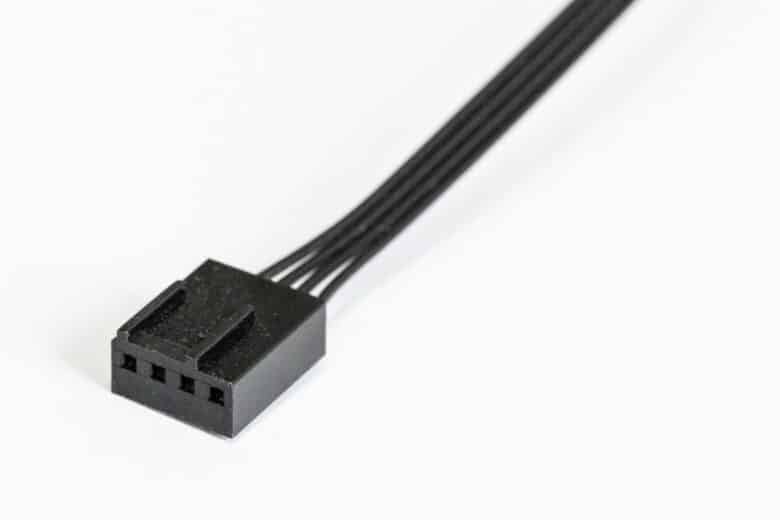
Performance as a radiator fan
- Very high performance
- Extremely good power to noise ratio
- High maximum power
When tested as a radiator fan, the Arctic P12 Max competes against other fans on an Arctic Liquid Freezer II 240. In addition to the regular Arctic P12, I chose the slightly more expensive, but not dissimilar in design, Cooler Master Mobius 120 as competition. To get into a similar speed range, I also test the Noctua NF-F12 industrialPPC-3000 against it. The AIO water cooling sits on top of an AMD Ryzen 9 5950X, which pulls around 160W in Cinebench with an overclock. The temperature is measured after a uniform warm-up time of 8 minutes. The radiator sits in the front of the Fractal Design Pop XL Air, which offers even more resistance in addition to the radiator with the tight mesh fan grille.
Test at 1100 RPM
First of all, we are talking about the test at a uniform speed of 1100 RPM. In terms of sheer performance, the Noctua fan comes out on top here and is followed only by a solid margin by the two versions of the Arctic P12, which perform very comparably here. The Cooler Master Mobius follows with a much smaller gap. But in line with its high performance, the Noctua fan is also noticeably louder than the other three. The Arctic P12 Max is the quietest fan in this test. However, the P12 and Mobius each follow by close margins.
Test at 31 dB(A)
Now, if you choose a normalized volume rather than a uniform speed as a reference, the Noctua fan’s performance advantage is gone. In our large radiator fan test, the Arctic P12 even places third in the overall comparison and is only beaten by the many times more expensive Noctua NF-A12x24 and the be quiet! Silent Wings Pro 4, whereas the Noctua NF-F12 industrialPPC-3000 finds itself at the lower end. It has real trouble getting quiet and has to spin really slowly to do so. However, the Arctic P12 and the Cooler Master Mobius 120 are both not really far off the P12 Max, which is an impressive result, especially for the once again noticeably cheaper Arctic P12.
Maximum performance
Okay – if you’re looking for fans with such a high maximum speed, you might not be interested in the noise level. For example, in server rooms where it likes to get warmer, the highest possible performance is simply needed and the closed door takes care of the noise. Or if the fans in industrial halls are drowned out anyway, then performance and reliability may simply be more important. At home, on the other hand, maximum performance is not a desirable state for high-speed fans. If you’re trying to decide between the Noctua fans and the Arctic P12 Max here, I have to put you off for clear results: the performance is within the range of the measurement tolerance. However, the Arctic P12 Max are only half as loud and are also significantly cheaper. The advantage of the Noctua fans is at most the already proven longevity in continuous operation. However, Arctic also promises a very high reliability for the P12 Max and provides an above-average warranty of 6 years.
By the way, the regular Arctic P12s are largely on par with the Cooler Master Mobius 120s – even if they perform a good bit weaker overall than the high-performance fans.

Use as a case fan
- Cooler Master Mobius 120 offers the best ratio of performance and volume
- Extremely high maximum power, but in the normal volume range, the regular P12 comes close
In principle, the test procedure here looks similar – three equivalent tests are performed, but the fans from the air cooler on the processor, a Ryzen 5 3600X, and the graphics card are set to a fixed speed, so only the case fans make the difference. This Arctic P12 Max test is done in comparison to the same competitor fans in a DeepCool CH510 Mesh Digital. As a load, 3DMark Nightraid is run for 10 minutes and during the 11th run, processor and graphics card temperatures are measured.
Test at 1100 RPM
At 1100 RPM, the Cooler Master Mobius 120 takes the performance lead, but the Arctic P12 and P12 Max follow not too far behind in this test. The Noctua NF-F12 industrialPPC-3000 offers at least as strong a performance in principle, but gets noticeably louder in the process. The Artic P12 Max is the only one of the fans that gets so quiet that it cannot be distinguished from the background noise of the rest of the system by the volume meter. However, the Arctic P12 and the Cooler Master Mobius 120 are just barely at the perceptual limit.
Tested at 31 dB(A)
Around to this perceptual limit is the second test. In this case, the Arctic P12 Max is sped up a bit until it reaches the appropriate volume and the Noctua NF-F12 iPPC-3000 is turned down significantly. However, the additional speed to around 1230 RPM doesn’t really give the Arctic P12 Max a performance advantage and the performance is still within the tolerance range to the regular Arctic P12. The Cooler Master Mobius 120 remains at the top of performance, while the Noctua fan drops off noticeably. A solid result for both Arctic fans, though the Mobius simply remains the slightly better fan for this application.
Maximum Performance
As with the radiator test, it must be said that none of the high-performance fans, i.e. fans with more than 2000 RPM, still offer really pleasant volumes. The Arctic P12 Max does not really make a difference, even if it is noticeably quieter than the competition from Noctua. When the fans are turned up to full, the Noctua NF-F12 industrialPPC-3000 actually pulls ahead of the Arctic P12 Max in terms of performance. However, this is only just and at a noticeably higher purchase price as well as a noticeably higher noise development. And according to the speed, the Cooler Master Mobius 120 follows with a certain distance and a bit behind is the Arctic P12, but at maximum speed it is the only fan in the comparison that is still really tolerably quiet.
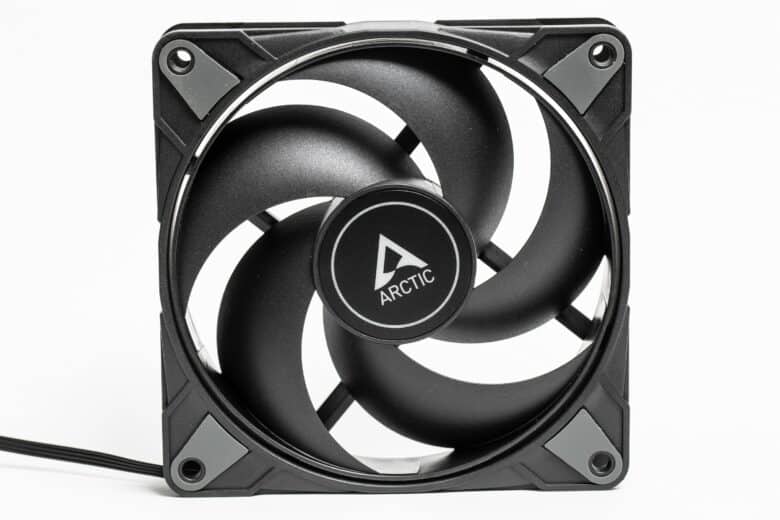
Substitute fan on air cooler?
- Arctic P12 Max still with good volume-to-performance ratio
- Noctua NF-F12 industrialPPC-3000 offers more pure performance
Those who are not satisfied with the fan of their air cooler or would like to reduce the volume or improve the performance, could play with the idea of clamping another fan on the heat sink. This is no problem with the Arctic P12 Max thanks to its standard dimensions.
In principle, I performed the same test procedures here, but I’ll shorten the explanation a bit, because it roughly repeats the case fan performance. In the lower speed range, the Arctic P12 Max and Cooler Master Mobius 120 battle it out for first place. In terms of uniform volume and maximum speed, the Noctua NF-F12 industrialPPC-3000 jumps to the top. The regular Arctic P12 is still just behind the P12 Max. Ergo everything about the same as before.
Conclusion
I have to say that I’m ambivalent about the Arctic P12 Max. On the one hand, it’s a solid, snappy fan with a great performance envelope and a good power-to-noise ratio. On the other hand, the regular Arctic P12s are not only a good bit cheaper, but they are also finer to control and they already completely exhaust the noise tolerable range. So I actually consider the Arctic P12 Max to be superfluous for regular home users and would recommend the regular P12s. However, for users with a lot of experience setting fan curves or for use in servers in closed rooms, the Arctic P12 Max are a cheaper solution to get high performance fans. Nonetheless, the Arctic P12 Max are definitely very good, flexible, and quiet at low speeds fans whose competition at similar speeds turns out to be far more expensive.
Arctic P12 Max
Workmanship
Features
Performance
Noise level
Value for money
90/100
The Arctic P12 Max is an affordable 120mm fan with a particularly high speed range that is exceptionally quiet, especially at lower speeds.


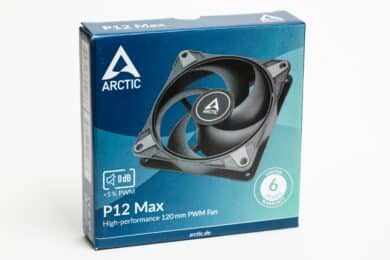


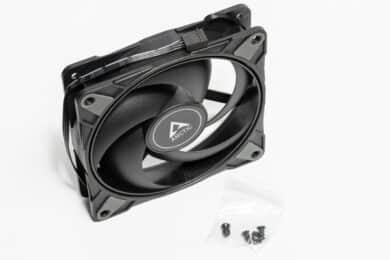

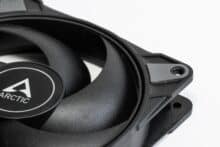


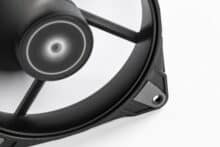
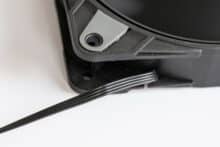

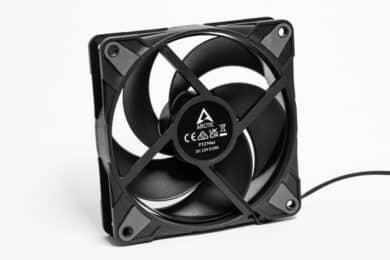





No replies yet
Neue Antworten laden...
Gehört zum Inventar
Beteilige dich an der Diskussion in der Basic Tutorials Community →